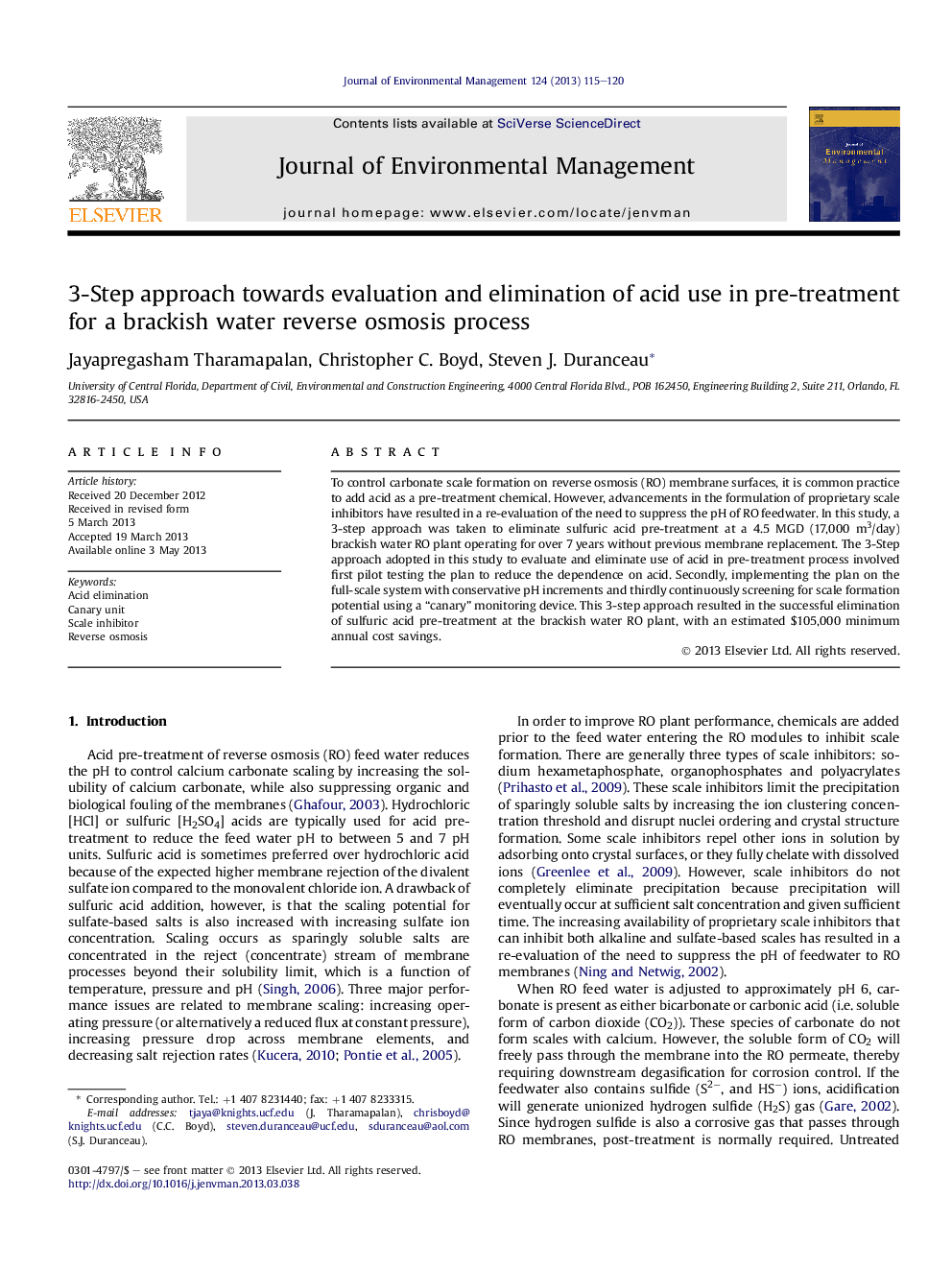| Article ID | Journal | Published Year | Pages | File Type |
|---|---|---|---|---|
| 1056268 | Journal of Environmental Management | 2013 | 6 Pages |
•A three-step approach for eliminating acid pre-treatment in RO plants is discussed.•Developed an innovative scale monitoring approach using the “canary” unit.•Performance of post-treatment systems was assessed in the research.•Acid reduction can be successfully employed in full-scale desalination facilities.•The 3-step approach resulted in an estimated $105,000 annual cost savings.
To control carbonate scale formation on reverse osmosis (RO) membrane surfaces, it is common practice to add acid as a pre-treatment chemical. However, advancements in the formulation of proprietary scale inhibitors have resulted in a re-evaluation of the need to suppress the pH of RO feedwater. In this study, a 3-step approach was taken to eliminate sulfuric acid pre-treatment at a 4.5 MGD (17,000 m3/day) brackish water RO plant operating for over 7 years without previous membrane replacement. The 3-Step approach adopted in this study to evaluate and eliminate use of acid in pre-treatment process involved first pilot testing the plan to reduce the dependence on acid. Secondly, implementing the plan on the full-scale system with conservative pH increments and thirdly continuously screening for scale formation potential using a “canary” monitoring device. This 3-step approach resulted in the successful elimination of sulfuric acid pre-treatment at the brackish water RO plant, with an estimated $105,000 minimum annual cost savings.
